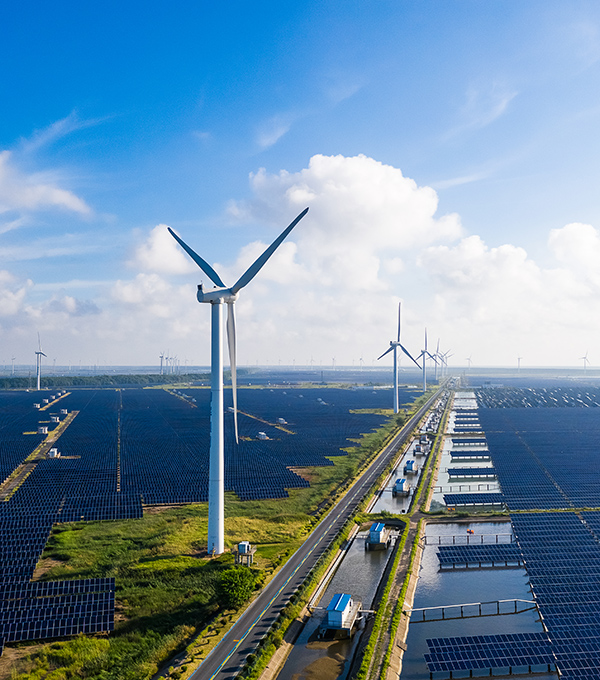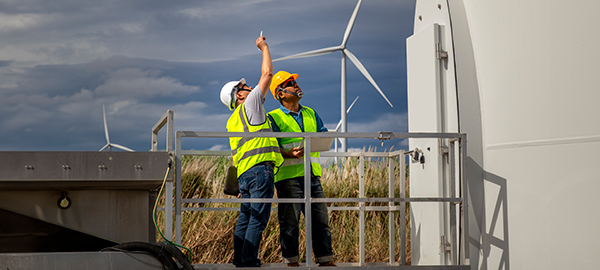Across the globe, corporations are pledging to work only with first tier suppliers who are committed to supply chain sustainability, and who ask the same from their suppliers. While transitioning to more sustainable supply chain management has its challenges, following proven best practices will help ensure a smooth process from end-to-end while benefiting both the planet––and your bottom line.

Sustainable supply chain management (SSCM) is an overarching strategy that aims to incorporate sustainable practices throughout the entire supply chain, otherwise known as supply chain sustainability.
By incorporating supply chain sustainability, SSCM shifts the traditional linear supply chain elements of speed, cost, and reliability into a more circular process to ensure all materials, products, and efforts used within the supply chain are renewed or reused, rather than wasted.
Ideally, supply chain sustainabilityis the practical outcome of successful sustainable supply chain management, and is determined by the level of effort a company puts into considering the environmental and human impact of their products’ journey through the supply chain, from raw material sourcing to production, storage, and delivery.
While they are two separate concepts within supply chain management, supply chain sustainability and SSCM both work together to create a balance between economic profitability and environmental and social responsibility, to ensure long-term supply chain success while reducing any harm to the planet and society.

A company’s supply chain is responsible for the bulk of their environmental impact. Therefore, moving the needle towards a sustainable supply chain enables you to make a significant change within the world around you by reducing the negative effect of business on the environment, as well as society.
Incorporating sustainable supply chain management also helps improve your organization’s productivity, company partnerships, and branding, while promoting a positive work culture, mitigating risk, and in general, making your company more competitive.

You’re ready to move toward more sustainable supply chain management. Now what? New approaches are bound to be met with resistance at first. Being prepared for the hurdles that may lie ahead will better equip you with the tools and tactics you need to make a successful transition to sustainable supply chain management.
Managing a more sustainable supply chain comes with added costs related to increased employee training, hiring of specialists, more environmentally friendly sourcing, and additional checkpoints and procedures, to name a few. But keep in mind, this will be offset by the fact that your company will be much more competitively positioned.
Your supply chain has a current support system in place that enables the process from start to finish. In order to achieve your sustainability goals, you may need to make some changes to carve out your new path, including selecting new partners.
Putting the processes in place to establish this new form of operation will require an overhaul of certain infrastructures. It takes commitment and time, but once established, will be a habitual part of your company’s culture.
There are many elements crucial to sustainable supply chain management that you simply don’t yet have in place, such as resources, technical expertise, process initiatives, software/technology, and organizational policies. But with more sustainability experts entering the workforce every day and the move toward more digitization, these elements will become easier to acquire.
Not everyone is comfortable with change, especially when visible results aren’t immediate. It’s important to consistently communicate that sustainability is the way of the future, and your company’s certain path to a more secure, and profitable level of success.
When it comes to incorporating sustainable supply chain management into your company, there are practices to follow that will help ensure its success:

What will your process look like? What will your code of conduct be? You need to detail what every step of your journey will look like and define the standards you will commit to uphold.

The details and importance of new policies and environmental and social responsibility initiatives must be explained to stakeholders in order to garner their understanding and support.

Make the commitment to “reduce, reuse, recycle” everywhere you can to eliminate unnecessary waste.

Your employees and partners need to know exactly what your goals and expectations are. Keep everyone informed, motivated, and accountable.

We can’t improve what we don’t measure. That’s why it’s critical to create realistic objectives and key performance indicators (KPIs) so you can track your progress and make adjustments, as necessary.
Incorporating and managing a sustainable supply chain requires implementing an end-to-end structure than enables a sustainable flow of goods and services. Forrester Research has developed a framework for integrating sustainability into your supply chain, with a focus on four areas:

From hot topics to career tips and impactful news, Supply Chain Signals Newsletter delivers everything you need to know right to your inbox.
